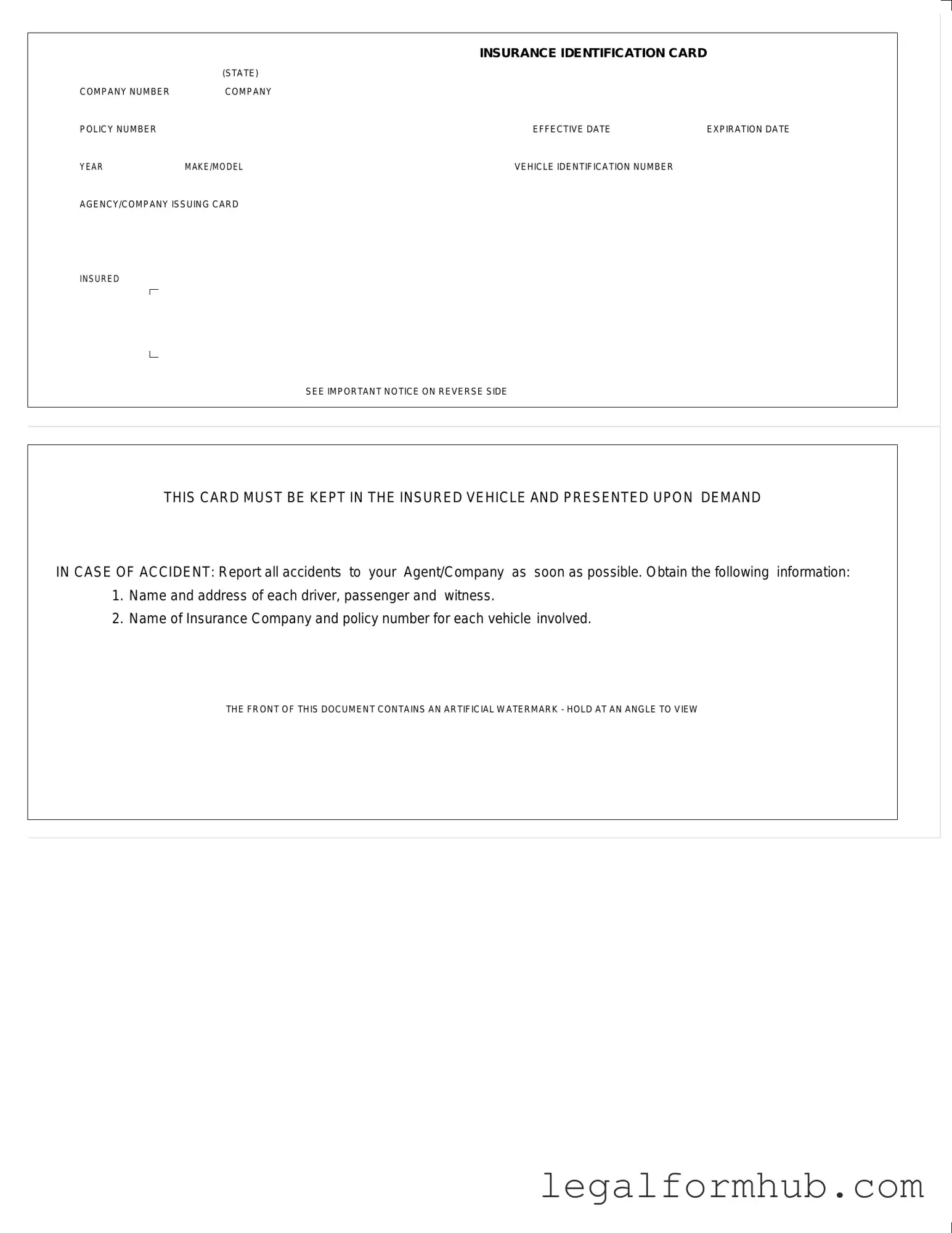The Auto Insurance Card serves a specific purpose in demonstrating proof of insurance coverage for a vehicle. Similarly, a Driver's License functions as an official document that certifies an individual's ability to operate a motor vehicle. Both documents must be presented upon demand; while the Auto Insurance Card proves financial responsibility, the Driver's License verifies the driver's identity and qualifications. Each document is issued by a state authority, and both contain critical information, such as personal details and expiration dates, ensuring that they are up-to-date and valid for use on the road.
Another document that shares similarities with the Auto Insurance Card is the Vehicle Registration Certificate. This certificate serves as proof that a vehicle is registered with the state, providing essential details about the vehicle, including its identification number and the owner's information. Just like the Auto Insurance Card, the Vehicle Registration Certificate must be kept in the vehicle and presented when required, such as during a traffic stop or an accident. Both documents are crucial for legal compliance and help ensure that vehicles are properly insured and registered for use on public roads.
The Proof of Insurance Letter is yet another document akin to the Auto Insurance Card. This letter, typically issued by an insurance company, confirms that an individual holds an active insurance policy for their vehicle. While the Auto Insurance Card is a physical card that must be kept in the vehicle, the Proof of Insurance Letter can be a temporary document, often used when a card is not immediately available. Both documents serve the same fundamental purpose of providing evidence of insurance coverage and may include similar information, such as policy numbers and effective dates.
A Certificate of Insurance is also comparable to the Auto Insurance Card. This document is often used in situations where proof of insurance is required for contractual obligations, such as leasing a vehicle or entering into agreements with other parties. Like the Auto Insurance Card, a Certificate of Insurance outlines the details of the insurance policy, including coverage limits and the insured party's information. Both documents are essential in demonstrating that an individual has the necessary insurance coverage to protect against potential liabilities while operating a vehicle.
To facilitate your rental process, it is important to review the terms outlined in this comprehensive Missouri Lease Agreement form, which details the key responsibilities and obligations of landlords and tenants.
Lastly, a Title Document, which establishes ownership of a vehicle, shares some similarities with the Auto Insurance Card. While the Auto Insurance Card proves financial responsibility, the Title Document proves legal ownership. Both documents include important vehicle information, such as the Vehicle Identification Number (VIN) and details about the owner. Furthermore, both documents must be kept accessible, as they may be required during vehicle transactions or legal matters. Together, they form a comprehensive understanding of a vehicle's legal and financial standing.
